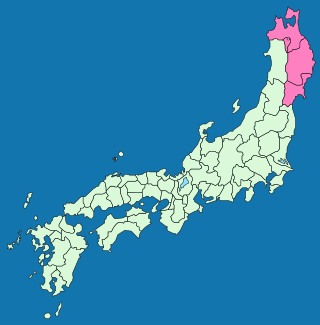Top Qs
Timeline
Chat
Perspective
Sanriku
From Wikipedia, the free encyclopedia
Remove ads
Sanriku (三陸), sometimes known as Rikushū (陸州), lies on the northeastern side of the island of Honshu, corresponding to today's Aomori, Iwate and parts of Miyagi Prefecture and has a long history.

The 36 bays of this irregular coastline tend to amplify the destructiveness of tsunami waves which reach the shores of Sanriku,[1] as demonstrated in the damage caused by the 2011 Tōhoku earthquake and tsunami.
Remove ads
History
On January 19, 1869, in the aftermath of the Boshin War, the provinces of Mutsu and Dewa were divided. Mutsu was split into new five provinces: Rikuō (also read Mutsu), Rikuchū, Rikuzen, Iwashiro and Iwaki. The first three of these collectively known as the "Three Riku", or Sanriku, with san (三) meaning "three."[2]
The new provinces became quickly obsolete in July 1871 when the abolition of the han system divided Japan into its present prefectures that became the sole divisions used by the government. However, the label lives on in common usages such as the Sanriku Coast, which extends along Japan's Pacific coastline from Aomori in the north down to the Oshika Peninsula in Miyagi.[3]
Remove ads
See also
Notes
Wikiwand - on
Seamless Wikipedia browsing. On steroids.
Remove ads
